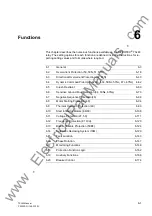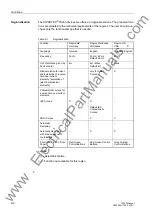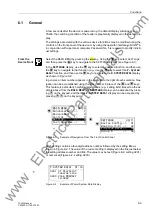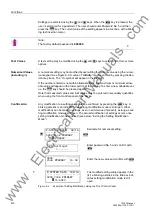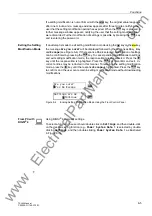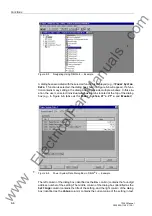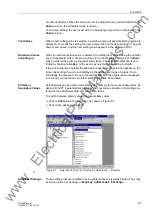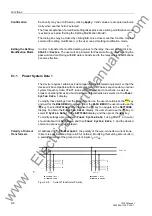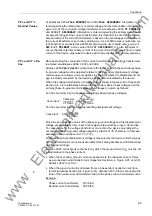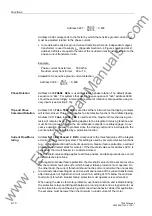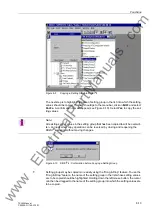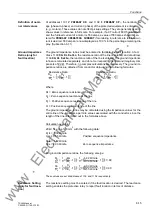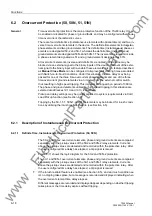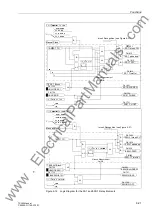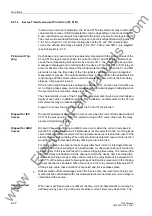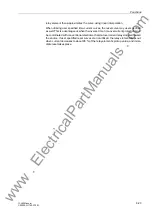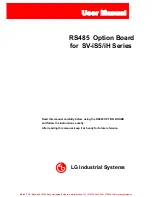
Functions
6-10
7SJ63 Manual
C53000-G1140-C120-1
Address
corresponds to the factor by which the sensitive ground current (I
Ns
)
must be adjusted relative to the phase current.
•
In models with sensitive ground current detection where an independent current
transformer is used to supply I
Ns
(Appendix Section A.4, Figures A-38 and A-42),
address
is set equal to the ratio of the neutral current transformer ratio to the
phase current transformer ratio.
Example:
Phase current transformer
500 A/5 A
Neutral current transformer
60 A/1 A
Adaptation for sensitive ground current detection:
Phase Rotation
Address
3+$6(6(4
is used to establish phase rotation. The default phase
sequence is “abc”. For systems that use a phase sequence of “acb”, address
should be set accordingly. A temporary reversal of rotation is also possible using bi-
nary inputs (see Section 6.16).
Trip and Close
Command Duration
Address
7PLQ75,3&0'
is used to set the minimum time the tripping contacts
will remain closed. This setting applies to all protective functions that initiate tripping.
Address
7PD[&/26(&0'
is used to set the maximum time the closing con-
tacts will remain closed. This setting applies to the integrated reclosing function and
must be long enough to allow the circuit breaker contacts to reliably engage. An ex-
cessive duration causes no problem since the closing command is interrupted in the
event another trip is initiated by a protective function.
Current Flow Moni-
toring
Address
%NU&ORVHG,0,1
corresponds to the threshold value of the integrat-
ed current flow monitoring system. This setting is used by several protective functions
(e.g., voltage protection with current supervision, breaker failure protection, overload
protection, and restart block for motors). If the threshold value set at address
is
exceeded, the circuit breaker is considered closed.
The threshold value setting applies to all three phases, and takes precedence over all
other protective functions.
With regard to breaker failure protection, the threshold value must be set at a level be-
low the minimum fault current for which breaker failure protection must operate. On
the other hand, the current threshold should not be set more sensitive than necessary
to avoid extended resetting times on transient phenomena of the current transformers
after interruption of high short–circuit currents. A setting of 10% below the minimum
fault current for which breaker failure protection must operate is recommended.
When using the device for motor protection, overload protection, and restart blocking;
the protective relay can distinguish between a running motor and a stopped motor, as
well as take into account the varying motor cool-down behavior. Under this application,
the set value must be lower than the minimum no-load current of the motor.
Address 0207
300 5
⁄
500 5
⁄
-----------------
0.600
=
=
Address 0208
60 1
⁄
500 5
⁄
-----------------
0.600
=
=
www
. ElectricalPartManuals
. com






